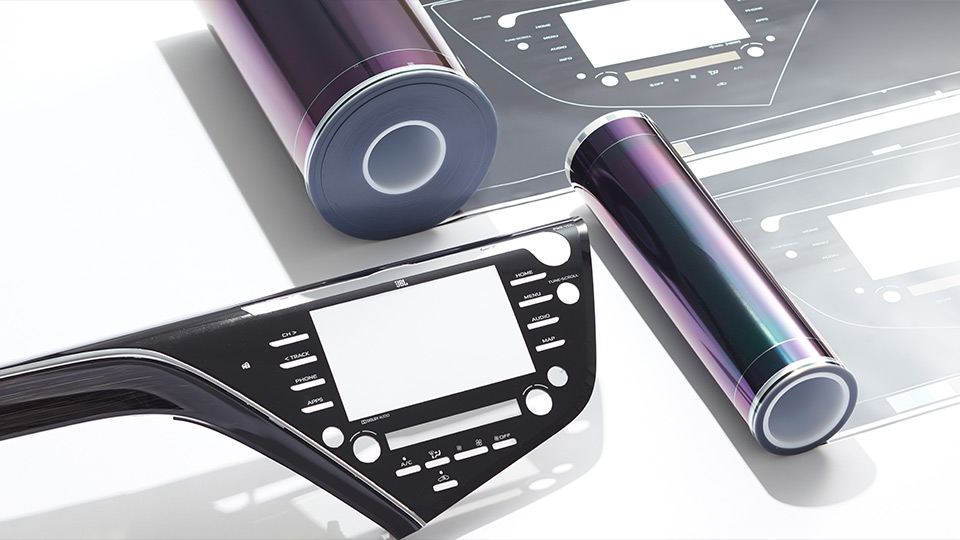In-Mold Decorations: Transforming Production Standards
In-Mold Decorations: Transforming Production Standards
Blog Article
In-Mold Decorations Demystified: Unlocking the Tricks Behind This Advanced Production Process
In today's busy manufacturing landscape, in-mold designs have emerged as an advanced method that proceeds to intrigue sector specialists. Keep tuned as we study the underlying concepts and reveal the enigmatic appeal of in-mold designs, dropping light on the tricks that push this process to the forefront of modern production techniques.
The Advancement of In-Mold Decorations
The development of in-mold designs has been marked by significant developments in technology and layout innovation. In-mold decorations were restricted in their complexity and color alternatives. Nevertheless, with the advent of new production methods and materials, the opportunities have expanded exponentially.
One trick development has actually been the growth of high-resolution printing processes that permit detailed styles with vivid colors to be moved onto products throughout the molding process. This has allowed producers to attain photorealistic pictures and thorough graphics that were previously unattainable.
In addition, the integration of robotics and automation in the in-mold decor process has actually improved effectiveness and uniformity in applying designs to items. This not only minimizes production time but additionally enhances the general top quality of the finished items.
Recognizing the In-Mold Refine
Marked by significant developments in innovation and style advancement, the advancement of in-mold decors has actually led the means for a much deeper understanding of the detailed procedure entailed in developing these attractive components. The in-mold procedure is an advanced production strategy where attractive components are incorporated directly into the final item throughout the molding process.
Understanding the in-mold procedure needs exact control over different parameters, consisting of timing, stress, and temperature, to ensure the design adheres properly to the item. Furthermore, selecting the appropriate materials is essential to attaining high-quality outcomes. By grasping the complexities of the in-mold procedure, suppliers can create aesthetically striking products with durable, lasting designs that enhance both the aesthetics and capability of the end product.
Benefits of In-Mold Decorations
Progressing item appearances and longevity, in-mold designs offer a streamlined strategy to integrating attractive aspects throughout the manufacturing process. Among the essential advantages of in-mold decorations is the smooth integration of colors, graphics, and appearances straight right into the product throughout the molding process. In-Mold Decorations. This gets rid of the demand for post-production decoration techniques, such as paint or printing, which can be time-consuming and expensive
In addition, in-mold decors are highly resilient as the graphics are encapsulated within the product, making them immune to wear, scrapes, and fading. This results in products that preserve their aesthetic allure and branding for a longer duration, even in severe atmospheres.
In addition to enhancing aesthetics and toughness, in-mold decors additionally offer raised style versatility. Producers can quickly include intricate layouts, textures, and branding elements that would be difficult or difficult to accomplish with standard design techniques.
Applications Throughout Industries
Throughout numerous markets, in-mold decors have found functional applications that enhance both the visual allure and resilience of items. In addition, the appliance useful site market makes use of in-mold decors to produce elegant and long-lasting have a peek at this site control panels and fascia for items like ovens and refrigerators. Overall, in-mold designs offer a effective and cost-efficient way to enhance the appearances and resilience of products throughout a vast array of industries.

Future Trends in In-Mold Innovation
The development of in-mold decorations is poised to proceed forming the landscape of product style and production as Future Trends in In-Mold Innovation assure innovative services to further enhance visual looks and product sturdiness. In addition, improvements in digital printing methods are allowing makers to accomplish better customization and detail in in-mold designs, opening up new possibilities for innovative item layouts. An additional significant fad is the combination of clever modern technologies, such as NFC tags or LED lights, straight into in-mold designs, including useful and interactive aspects to products.

Conclusion
In-mold decorations have changed the manufacturing procedure by flawlessly integrating style components right into items. Recognizing the complexities of this process is crucial for sectors aiming to improve their products with aesthetically attractive and resilient designs. With its countless advantages and functional applications throughout numerous industries, in-mold modern technology is positioned to proceed forming the future and evolving of manufacturing. Keep informed and remain ahead in this innovative area.
By grasping Continue the details of the in-mold procedure, makers can generate visually striking items with durable, lasting decorations that boost both the aesthetics and functionality of the final item.
Progressing product appearances and resilience, in-mold decorations use a streamlined strategy to incorporating attractive aspects during the manufacturing process. One of the key benefits of in-mold designs is the seamless combination of graphics, shades, and structures directly right into the item during the molding procedure.The evolution of in-mold designs is positioned to continue forming the landscape of product design and manufacturing as Future Trends in In-Mold Modern technology guarantee ingenious remedies to additionally enhance aesthetic appearances and product longevity.In-mold decors have actually revolutionized the manufacturing procedure by flawlessly integrating style elements into items.
Report this page